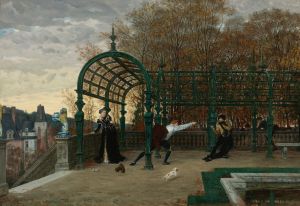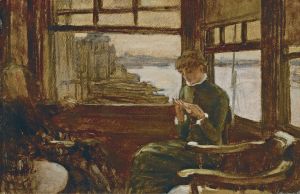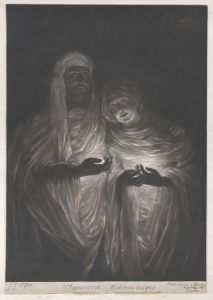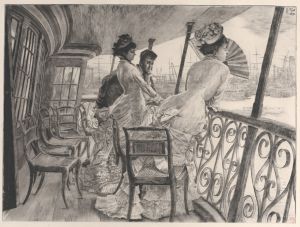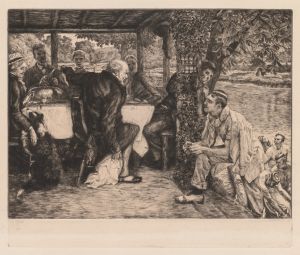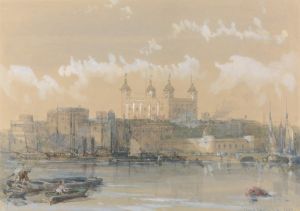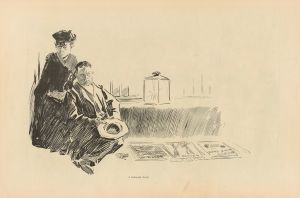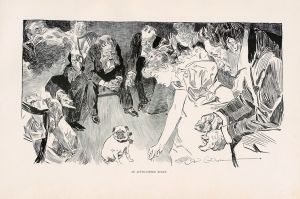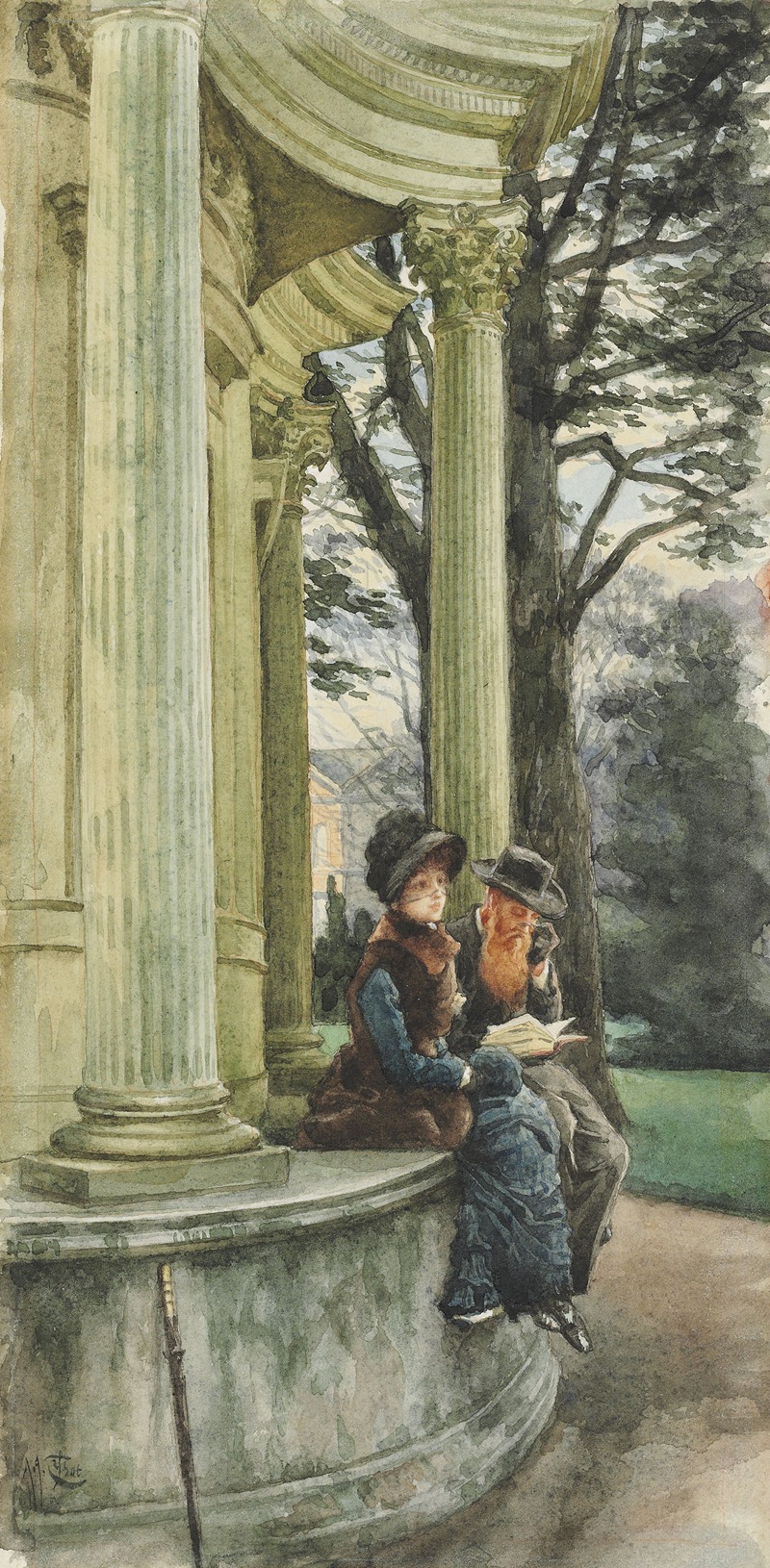
Kew Gardens, London
A hand-painted replica of James Tissot’s masterpiece Kew Gardens, London, meticulously crafted by professional artists to capture the true essence of the original. Each piece is created with museum-quality canvas and rare mineral pigments, carefully painted by experienced artists with delicate brushstrokes and rich, layered colors to perfectly recreate the texture of the original artwork. Unlike machine-printed reproductions, this hand-painted version brings the painting to life, infused with the artist’s emotions and skill in every stroke. Whether for personal collection or home decoration, it instantly elevates the artistic atmosphere of any space.
"Kew Gardens, London" is a painting by the French artist James Tissot, created in 1879. Tissot, born Jacques Joseph Tissot on October 15, 1836, in Nantes, France, was known for his detailed and fashionable depictions of contemporary life, particularly focusing on the social scenes of the Victorian era. He moved to London in 1871, where he continued to build his reputation as a painter of modern life.
The painting "Kew Gardens, London" captures a serene and picturesque scene in the Royal Botanic Gardens, Kew, located in southwest London. Kew Gardens, established in 1759, is one of the world's leading botanical gardens, renowned for its extensive plant collections and beautiful landscapes. By the time Tissot painted this scene, Kew Gardens had already become a popular destination for both Londoners and tourists.
In "Kew Gardens, London," Tissot depicts a group of elegantly dressed women and children enjoying a leisurely day in the gardens. The figures are shown strolling along a path, surrounded by lush greenery and vibrant flowers. The painting reflects Tissot's keen eye for detail and his ability to capture the fashion and social customs of the time. The women's attire, with their elaborate dresses and hats, is indicative of the late Victorian period, highlighting Tissot's interest in contemporary fashion.
The composition of the painting is carefully balanced, with the figures arranged in a way that leads the viewer's eye through the scene. The use of light and shadow adds depth and dimension to the work, creating a sense of realism and immediacy. Tissot's skillful handling of color and texture further enhances the overall effect, making the viewer feel as though they are stepping into the garden themselves.
"Kew Gardens, London" is a testament to Tissot's talent for capturing the essence of his subjects and their surroundings. His ability to convey the atmosphere of a specific moment in time is evident in this work, as he brings to life the leisurely pursuits of the Victorian middle and upper classes. The painting also reflects Tissot's broader interest in the interplay between people and their environments, a theme that recurs throughout his oeuvre.
Today, "Kew Gardens, London" is held in a private collection, and it continues to be admired for its beauty and historical significance. The painting serves as a window into the past, offering a glimpse of the social and cultural life of late 19th-century London. Through his meticulous attention to detail and his ability to capture the spirit of his time, James Tissot has left an enduring legacy in the world of art.






